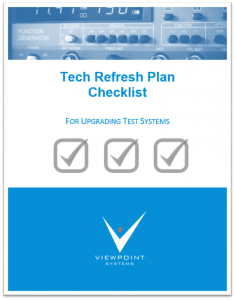Tech Refresh Plan Checklist
for updating obsolete Automated Test Systems
When should you use this checklist?

If you’ve recently upgraded an obsolete test system, or are about to embark on an upgrade, a tech refresh plan can help guide the process.
The objective of a Tech Refresh Plan is to review the state of the test system with regard to the life cycle of its components assessed against the life cycle(s) of the product(s) being tested.
This checklist will help get you started as you develop a tech refresh plan.